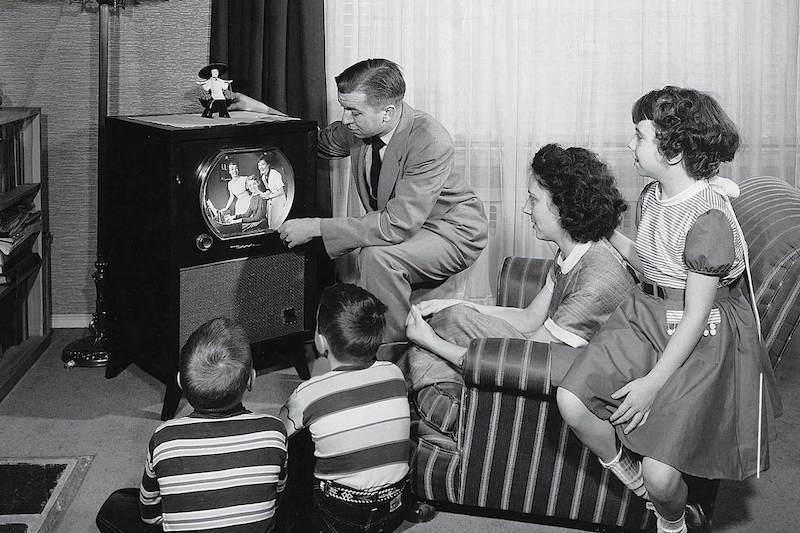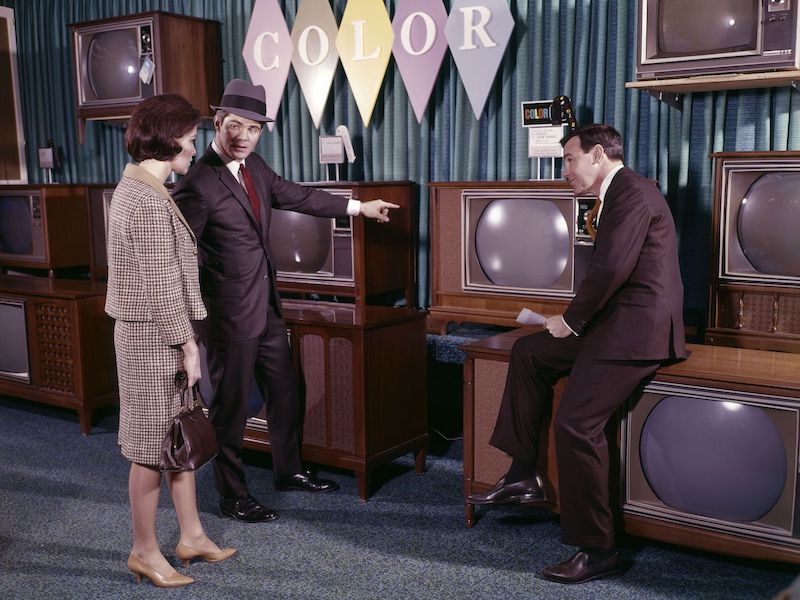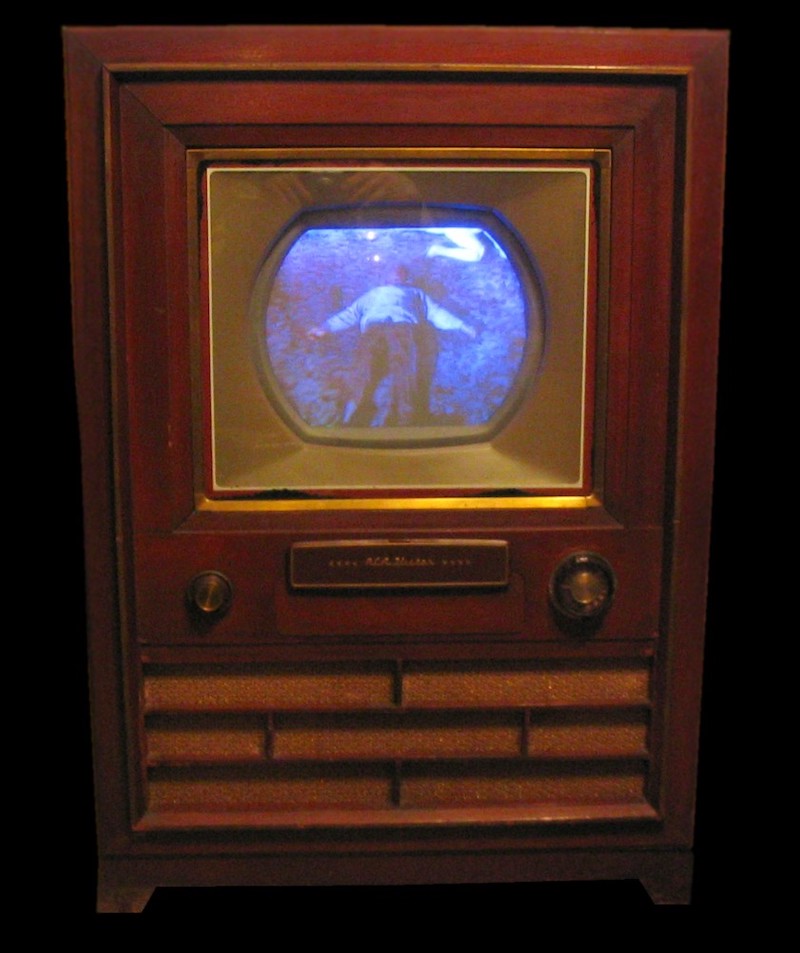Television. The small screen. The “teloche”… So many adjectives to designate this good old TV, essential object of homes around the world. Before the advent of the Internet, it was still our main window on the world.
Even today, it is a widely consumed medium even if it is experiencing some setback against its interactive competitor. It is estimated, for example, that an American household spends an average of 3 hours and 47 minutes a day in front of its TV.
Faced with such a devouring passion for this everyday companion, it seems interesting to look a little at his story! The small screen is indeed the result of many types of research and evolutions that have led to what it is today.
Think about it the next time you check your TV program or you’ll watch a trailer to find out what you’re going to watch in the small box at night!
The Beginnings (late 1800-1934)

Various experiments in the field of electricity and the radio, conducted by different actors over time, laid the foundations for the invention of TV.
In the late 1800s, Paul Gottlieb Nipkow, a German engineer, developed the first mechanical module of TV. He managed to send images through wires using a rotating metal disk. At the time, this technology, called the “electric telescope,” had a resolution of only 18 lines.
Around 1907, two separate inventors (A.A. Campbell-Swinton and Russian scientist Boris Rosing) used the cathode-ray tube in addition to the mechanical scanner system, creating a new TV system.
According to the experiments of Nipkow and Rosing, two types of TVs appeared: mechanical and electronic.
1. Mechanical Television
In 1923, an American inventor named Charles Jenkins used the idea of Nipkow’s disc to invent the first practical mechanical TV. In 1931, his Radiovisor Model 100 (mechanical TV) was sold as a complete kit.
In 1926, British inventor John Logie Baird became the first to successfully transmit animated images through the mechanical disk system invented by Nipkow. He also started the very first television studio.
From 1926 to 1931, the mechanical type of TV underwent many innovations. So much so that by 1934, all television systems had converted to the electronic system still in use today.
2. Electronic Television
Swinton’s experiments from 1907 (a cathode-ray tube for electronic TV) were promising but unfortunately did not materialize. It was not until 1927 that the American inventor Philo Taylor Farnsworth made a functional model of electronic television based on Swinton’s ideas.
His experiments had begun when he was only 14 years old. At the age of 21, Philo had created the first electronic television system, which removed rotating discs and other mechanical aspects of mechanical type. Thus was born the television system at the origin of all modern TVs.
Of course, all these archaic television systems were black and white. It was not until much later that color screen appeared and revolutionized our relationship to information and entertainment.
The modern era of television: TV in color!

Today, nothing is more mundane than owning a color TV screen. But there was a time when it was considered the ultimate status symbol given the price of the device.
The first-ever recorded mention of a color monitor system dates back to 1904. A patent filed on this date in Germany proves that an idea of color TV was proposed at that time. But that’s all it remained then: an idea.
1925. Russian physicist and engineer Vladimir Zworykin also conceptualized a color TV system. Again, the project did not see the light of day. It was not until twenty years before, finally, in 1946, the idea of a color screen emerged again.

1946, then. The Second World War is now part of history.
On the other part of the Atlantic, there is a furious desire to make up for a lost time. And in this changing period, black-and-white television seems awfully dated. It is high time that it reinvented itself, and that is precisely what new technologies will allow.
A war CBS vs RCA
In the United States, the war for the development of color television was waged by two giants of the TV industry, CBS and RCA.
CBS first developed a color screen system. The concern of this system is that it was inspired by John Baird’s color TV ideas (dating from 1926 and therefore mechanical). The color screen was now a reality, but this first system was not compatible with black and white TVs.
In 1950, the Federal Communications Commission (or “FCC” – the body responsible for regulating the content of radio, tv, and Internet programs) announced that the CBS system was now the national standard for a color screen. And in 1951, CBS naturally began broadcasting in color on the East Coast of the United States.
Unimpressed about being left behind without doing anything, RCA challenged CBS. RCA blames the CBS system for not being able to be used with the millions of black and white TVs across America, most of which are JUST RCA sets.
The Korean War and then the Vietnam War (the first to receive television media coverage, which earned it its nickname “Television War”) gave RCA the “opportunity” to develop a better color screen system than CBS.
Unlike their competitor, their system was not mechanical but electronic and therefore technologically much superior.
Finally, in 1953, the FCC gave the green light to the color television system developed by RCA. RCA’s color TVs were available to the general public the following year.
Yet even though color screen sets were finally available, few people offered them. Indeed, affording this luxury was perceived as superfluous at the time given that only a handful of color programs were broadcast.
It took another decade (until about 1966) that color programs began to become more democratized. It was only then that people really started buying color TVs.
The basic operating system of television has changed little since then. Successive technologies have mainly contributed to improving the appearance and visual quality of the images that were broadcast there.
TV stations have become more and more refined until they become what they are today, flat screens only a few millimeters thick.
LCD, Plasma, and LED technologies have taken over from the good old cathode tubes, adapting to the modernity of our interiors.






